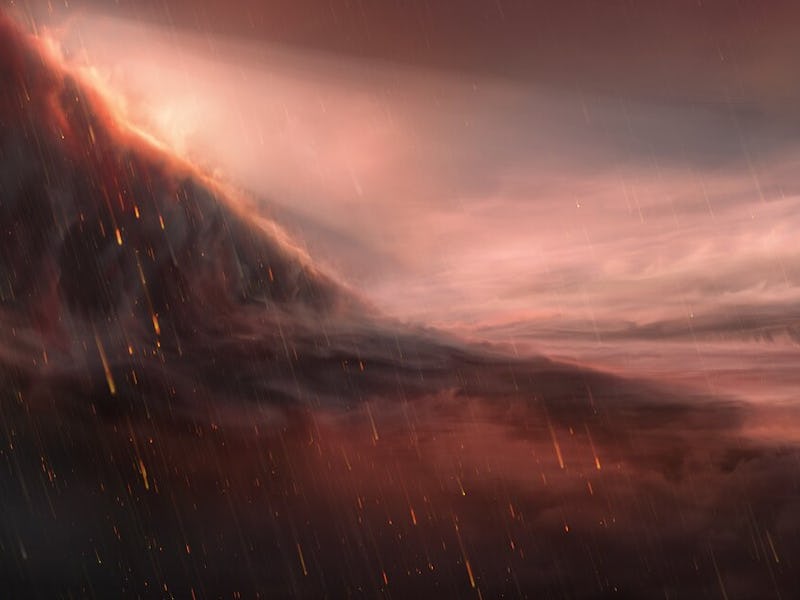On a bizarre, hot exoplanet 640 light years from Earth, scientists discover iron rain
We’re checking this one off the ‘potentially habitable’ list.

In the quest to discover an exoplanet that could potentially support life, we have encountered some pretty odd planets. Scientists have observed ocean worlds, planets with more than one Sun, and a coal black planet.
But a recent discovery by the European Southern Observatory (ESO) may reign, or rather rain, supreme as the most bizarre, extreme exoplanet ever observed.
A new study, published Wednesday in the journal Nature, details observations of exoplanet WASP-76b. The ultra-hot exoplanet was originally discovered in the year 2016, and is located around 640 light years away from Earth. It is almost as massive as Jupiter, and orbits around its star in 1.8 days.
Oh, and it possibly rains iron.
The observations provide scientists with a unique opportunity to study extreme climates on distant exoplanets, and analyze their atmosphere.
An artist's impression of possible future astronauts frolicking about the rainy exoplanet.
Singeing in the rain
Part of the reason why iron rain pours down on WASP-76b is to do with its strange relationship with its equally giant and hot star.
WASP-76b’s host star is an F-type star, which has 1.4 times the mass of the Sun and a scorching surface temperature that runs between 6,000 and 7,600 Kelvin, or between 10,340 and 13,220 degrees Fahrenheit.
"One could say that this planet gets rainy in the evening, except it rains iron."
Just like the Moon is to the Earth, the exoplanet is tidally locked to its star, which means that the planet takes as long to rotate around its axis as it does to orbit the star. As a result, the planet has one, burning hot side that continuously faces the star, and a cooler, constantly dark side that faces away from the star.
An artist's impression of WASP-76b. It would take humans 4 billion years to reach the planet going at 60 miles an hour.
On the planet’s day side, temperatures reaches above 4,352 degrees Farhenheit. That’s pretty hot. So hot, in fact, that it separates molecules into atoms and causes metals such as iron to evaporate into the atmosphere. At the same time, the surface on this side receives thousands of times more radiation than the Earth receives from the Sun, according to the study.
The side of the planet that is eternal night, on the other hand, is incredibly cold — temperatures there go below 2,732 degrees Farhenheit.
Because of the major difference in temperatures between the exoplanet's day and night sides, the surface is buffeted by forceful winds. And it is those winds that carry the iron vapor from the hot, day side to the cool, night side.
Just like water vapor on Earth cooling and condensing into rain, so does the iron on WASP-76b. As it crosses from the light to the dark side, it cools and transforms into a rain more extreme than any storm possible
“One could say that this planet gets rainy in the evening, except it rains iron,” David Ehrenreich, a professor at the University of Geneva in Switzerland, and lead author of the study, said in a statement.
The discovery marks the first time scientists have observed such a stark difference in one planet's chemistry, varying from its day side to its night side.
“Surprisingly, however, we do not see the iron vapor in the morning,” Ehrenreich said. “It is raining iron on the night side of this extreme exoplanet.”
The new data comes from observations of the planet made in September, 2018, using a new instrument on ESO’s Very Large Telescope (VLT), ESPRESSO.
ESPRESSO was originally designed to look for rocky exoplanets that resemble our own world that also orbit around Sun-like stars. But it has also proven useful when studying the atmospheres of exoplanets.
“What we have now is a whole new way to trace the climate of the most extreme exoplanets,” Ehrenreich said.